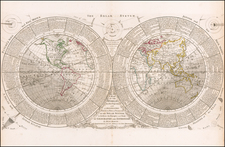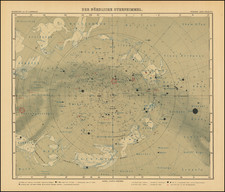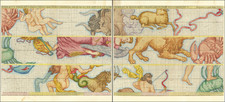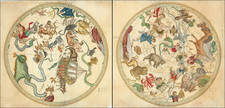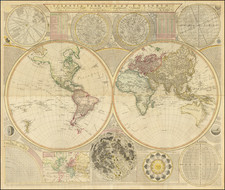The present engragving showcases two competing cosmological models: the Ptolemaic and the Copernican systems, which represent the clash between traditional geocentric beliefs and the revolutionary heliocentric model that reshaped our understanding of the universe.
Systema Ptolemai
The upper part of the page illustrates the Ptolemaic system, an earth-centered (geocentric) model where the Earth is depicted as the immovable center of the universe. Surrounding the Earth are concentric circles, each representing the orbits of the Moon, Mercury, Venus, the Sun, Mars, Jupiter, and Saturn, in ascending order from the Earth. This model also includes the celestial sphere of the fixed stars and various layers that represent the Prime Mobile, Crystalline Sphere, and the Primum Mobile, which are conceptual spheres beyond the planets. This system was widely accepted for over a millennium due to its alignment with the philosophical and religious doctrines of the time, despite its complex system of epicycles (small circles within larger circles) developed to explain planetary motion.
Systema Copernici
Below the Ptolemaic model, the Copernican system is presented as a revolutionary alternative. In this heliocentric model, the Sun is placed at the center of the universe, with planets, including the Earth, orbiting around it. This was a radical departure from the geocentric views of the time and laid the foundation for modern astronomy. In this diagram, the orbits of Mercury, Venus, Earth (with the Moon orbiting around it), Mars, Jupiter, and Saturn are depicted as concentric circles around the Sun, reflecting a simpler and more elegant explanation of planetary movements without the need for complex epicycles.









